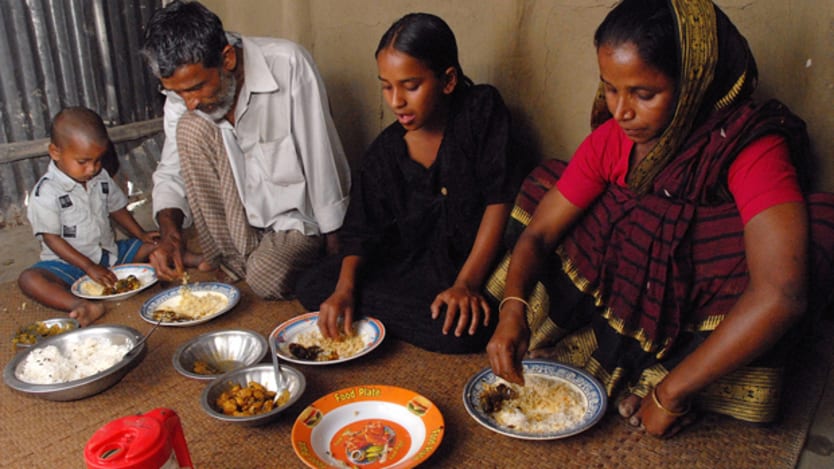
In developing countries throughout the world, inadequate access to nutritious food is a daily reality. Shockingly, 2 billion people across the world suffer from micronutrient deficiency, a condition known to contribute to maternal and infant morbidity and deaths. Stunting affects more than 162 million children, the majority of them living in food-insecure countries in sub-Saharan Africa and South Asia.
See more #FeedingDev articles:
• 1,000 Days: Why improving nutrition leads to long-term economic growth
• How nutrition data can help predict food insecurity risk
• How the EU stepped up its game on nutrition
• Filling the breadbasket: Latin America can help feed the world
In many of these places, however, it is not simply a lack of access to and ability to purchase nutritious food that contributes to undernutrition. Low awareness of how nutrition affects everything from physical health to income generation amplifies the problem.
Nutrition-specific and nutrition-sensitive interventions have begun to garner the attention and funding they deserve among the development community, with evidence mounting that undernutrition is both a symptom and a cause of major development challenges, ranging from HIV and AIDS-related deaths among key affected populations to economic growth at the household up to the national level. We know that the solution to global undernutrition requires integrated, multidisciplinary approaches to address the diverse systemic factors underlying the problem. But funds are limited, and we are forced to ask: How can we best leverage scarce resources in the face of this global challenge?
Integrating nutrition behavior change into development programs in order to empower food-insecure populations to make healthy decisions should be among the top priorities of donors committed to meeting international nutrition and food security targets, such as the World Health Organization’s global targets for 2025. When families are both informed and economically empowered to grow, purchase and properly utilize more nutritious food, their health outcomes improve; but the benefits extend well beyond the household. The demand that households collectively provide for nutritious food incentivizes commercial food producers to increase the supply. In the case of food security, sustainability starts with demand-driven markets.
The reason nutrition education is essential is that what households do with their income is a complex decision influenced by personal, economic and sociocultural factors. We cannot simply assume that improved livelihoods alone necessarily translate into smarter investments in food. Unfortunately, this means that improving global nutrition requires one of the most challenging aspects of development to implement and for which to sustain funding: long-term attitude and behavior change, and on a large scale targeting the most food-insecure populations in sub-Saharan Africa and South Asia.
The good news is that the development community has seen the power of integrating targeted, community-led nutrition education into development programs to transform household nutrition behavior and incrementally increase the demand for nutritious food. For example, Chemonics implemented an agriculture program in Nigeria funded by the U.S. Agency for International Development to improve food security through agribusiness development, improved agricultural productivity and income generation for farmers. The program integrated economic empowerment and nutrition education by mobilizing community-based organizations to train 4,100 women in enterprise skills, household management and nutrition.
An evaluation of the activity showed that the participants’ households were not only earning more money, but using the additional income to invest in more nutritious food. Specifically, 95 percent of the women reported increased household income. In terms of nutritional awareness, before the activity, only 27, 35 and 62 percent agreed that eating nutritious meals improved income and productivity, mental health and physical development, respectively. After training, those figures rose to 95, 97 and 99 percent.
The combination of higher income and awareness led to action. Among those who understood that nutrition improves income and productivity, 57 percent invested in a homestead farm and 88 percent started investing more in diversified diets for their families, adding essentials like protein and fruit. In addition, the percentage of women who indicated that nutrition was the top factor influencing what they fed their families rose from just 4.9 percent to 39 percent. Overall, with a relatively small investment, the program saw thousands of households shift from a coping mentality to improved use of food and long-term planning, with more diversified diets.
This is just one example of the power of integrated nutrition education and behavior change. Going forward, the development community needs to remember that food security is not only about access to and the ability to purchase nutritious food; it is also about healthy behaviors, including deciding to grow or purchase nutritious food. If we are serious about feeding development, we need to ramp up investments that integrate nutritional education to drive healthy dietary decisions and sustainably increase the demand for nutritious food among the populations that need it most.
Want to learn more? Check out Feeding Development's campaign site and tweet us using #FeedingDev.
Feeding Development is an online conversation hosted by Devex in partnership with ACDI/VOCA, Chemonics, Fintrac, GAIN, Nestlé and Tetra Tech to reimagine solutions for a food-secure future from seed and soil to a healthy meal.









